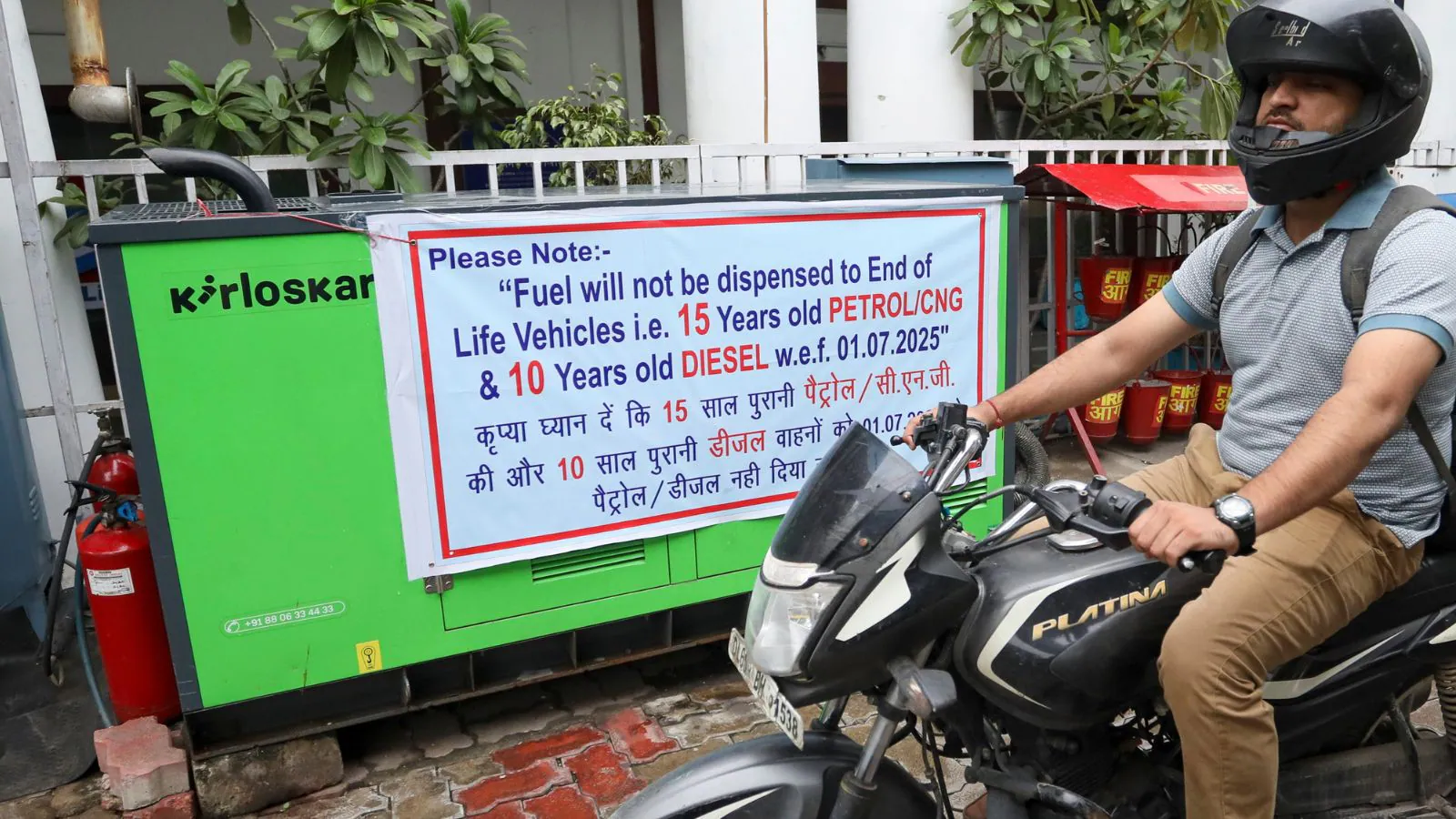By Manjiri Joshi News18
Delhi Bans Fuel For End-Of-Life Vehicles: To reduce air pollution, petrol pumps across Delhi stopped providing fuel to end-of-life vehicles (ELV) from today (July 1).
This means, diesel vehicles that have exceeded a life span of 10 years and petrol vehicles that have exceeded 15 years will not be fuelled. One traffic police officer will be stationed at each of the 350 identified petrol pumps to monitor and prevent the refuelling of such vehicles.
The ban has been imposed acting on the orders of the Commission for Air Quality Management (CAQM).
What are end-of-life vehicles?
End-of-life Vehicles (ELVs) are vehicles that are no longer roadworthy or usable and have reached the end of their useful life. This typically happens due to age, wear and tear, or damage beyond repair. ELVs
How do end-of-life vehicles add to pollution?
ELVs pose environmental hazards due to the presence of hazardous substances such as:
Fuel and oils
Brake fluids
Heavy metals and plastics
What are the rules for ELVs in India?
The Ministry of Environment, Forest and Climate Change (MoEF&CC) has notified the Environment Protection (End-of-Life Vehicles) Rules, 2025 dated January 6 for environmentally sound management of end-of-life vehicles. The rules are based on the principle of extended producer responsibility (EPR) where producers of vehicles are given mandatory EPR targets for scrapping of end-of-life vehicles. The rules cover all types of transport and non-transport vehicles, except agricultural tractor, agricultural trailer, combine harvester and power tiller.
Producers have been provided annual targets for scrapping of end-of-life vehicles starting from the year 2025-26 for the vehicles put in the market 15 years ago in case of transport vehicles and 20 years ago in case of non-transport vehicles.
Registered Vehicle Scrapping Facilities (RVSFs) have been mandated to receive unfit vehicles or End-of-Life vehicles for scrapping and must carry out treatment, depolluting, dismantling, segregation and scrapping activities.
The Ministry of Road Transport and Highways (MoRTH) has formulated the Vehicle Scrapping Policy for creation of an ecosystem to phase out older unfit and polluting vehicles.
As on January 2025, 84 RVSFs are operational in the country.
What are the rules for ELVs around the world?
European Union: Scrapped at 14-20 years. Directive 2000/53/EC requires that 95% (by weight) of each ELV must be reused or recovered, and 85% must be reused or recycled. Manufacturers must design vehicles for easy dismantling and recycling. Producers are responsible for the take-back of ELVs (Extended Producer Responsibility). Last owners can dispose of ELVs for free at authorized treatment facilities.
United Kingdom: The average age of scrappage is 13–15 years. The UK follows the EU ELV directive. Vehicles must be disposed of at an Authorised Treatment Facility (ATF). Owners receive a Certificate of Destruction (CoD) to prove legal disposal.
United States: Vehicles are usually scrapped at 15-17 years. There is no federal ELV law, but regulations exist at the state level. The focus is on recycling market forces.
Japan: The average age of scrappage is 12-13 years. The End-of-Life Vehicle Recycling Law (2005) makes it mandatory for recycling fees paid at the time of vehicle purchase. It covers airbags, refrigerants (CFCs), and shredding residue. Automakers are responsible for recycling through designated systems.
South Korea: Vehicles older than 10-12 years are often scrapped due to environmental and tax pressures. The country has an extended Producer Responsibility policy. Automakers must take back ELVs and meet recycling quotas. Similar to EU practices, but government oversight is stricter.
China: Has fixed retirement ages for some vehicle types (especially commercial vehicles). While private cars have no strict age limit, they must pass annual inspections after six years. Commercial vehicles are scrapped after 8-15 years, depending on type. The country pushes for regulated dismantling and recycling.
